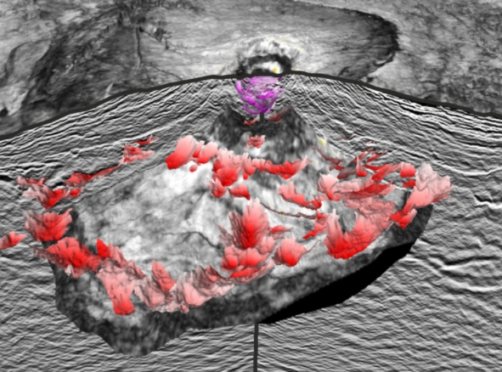North-east scientists have helped unearth new information on the “complex plumbing system” responsible for volcanic eruptions.
Aberdeen University geologists formed part of an international team analysing the Erlend volcano in the Faroe-Shetland basin of the North Atlantic.
They have now produced a detailed 3D map showing the volcano’s inner workings.
It was once a small volcanic island that last erupted 58 million years ago, and is now buried and preserved underneath more than half-a-mile of sediment on the sea floor.
The map reveals a complex amalgamation of smaller volcanic rock formations and suggests long-assumed concepts of how they work are overly simplified.
The research, also carried out by academics in Adelaide and Oslo, is part of a project led by Faye Walker, a PhD student at Aberdeen.
She said: “By producing the clearest images yet of the complex plumbing systems that underlie volcanoes, we can see things with our own eyes.”
Nick Schofield, from Aberdeen University’s School of Geosicences, added: “Understanding the plumbing systems below volcanoes is usually really challenging, and to see them in the field the overlying volcano has to be eroded.
“This makes understanding the connection between the magma and understanding how it transits into the volcano difficult. This work has revealed this in detail.
“In terms of oil and gas exploration, the area in which the data was collected is potentially really important for the UK’s future gas needs as part of the energy transition.”
